
10 Biggest Future Technology
Oleh : Sirajuddin Abbas
Jangan kaget, kelak hadir kamera tembus pandang di balik tembok. Majalah New Scientist, meramalkan 10 produk masa depan
Percayakah Anda? TV masa depan selain bersuara, berwarna, juga bisa beraroma. Otak manusia membagi aroma menjadi 30 lebih jenis, misalnya aroma kayu, aroma bunga, aroma rumput dan lain sebagainya. Itulah perkembangan produk teknologi di masa depan.
Majalah Inggris, New Scientist, sebagaimana dikutip Epoch Times, Selasa, 3 Februari 2009, meramalkan akan hadirnya 10 produk iptek besar yang diharapkan terjadi dalam 30 tahun ke depan. , dari ruang laboratorium melangkahkan kakinya ke rumah Anda, menjadi produk umum seperti halnya handphone (HP).
Ke-10 iptek besar tersebut termasuk alat pendeteksi tembus dinding, mantel penyirna tubuh ala Harry Potter, peralatan panjat dinding ala spiderman yang membuat orang mampu memanjat dinding, pesawat terbang pribadi super, pesawat antariksa pribadi dan TV yang dapat menebarkan aroma dan lain-lain.
Ada yang berpendapat ramalan tersebut terlalu muluk-muluk, betul-betul sulit dipercaya. Namun coba kita kilas balik ke-30 tahun yang lampau, pada 1979 tatkala perusahaan Jepang, NET berhasil mengembangkan HP internet pertamanya di seluruh dunia, banyak orang masih mengira berjalan sambil berbicara di telepon adalah hal yang mustahil, tetapi bagi manusia zaman sekarang HP telah menjadi barang bawaan yang harus ada. Seiring dengan perkembangan iptek, siapa bilang impian tersebut tak dapat menjadi kenyataan?
Harian Daily Mail Inggris dengan rinci menjelaskan “10 produk iptek besar masa depan” sebagai berikut:
1. Dinamo dari tubuh manusia
Nyaris setiap orang zaman sekarang memiliki HP, iPod dan alat elektronik lainnya, akan tetapi berbicara dengan HP dan mendengarkan iPod agak lama sedikit begitu baterai habis padahal kita sedang di luar, tentu tak dapat mengisi ulang, lantas bagaimana?
Andaikan saja dari pergerakan tubuh manusia bisa setiap saat di-pergunakan untuk pembangkit listrik, betapa bagusnya hal itu!
Kini ilmuwan di laboratorium sudah merealisir harapan tersebut. Wang Zhonglin seorang ilmuwan keturunan Tionghoa dari Politeknik Georgia, AS, menggunakan teknik Nano dan Piezoelectrik effect guna membangkitkan listrik. Dia berhasil membuat semacam pakaian serat fiber berdinamo dari bahan campuran serat logam super halus. Setiap kali fiber ditekan atau ditekuk, bisa menghasilkan aliran listrik. Yang disebut dengan Piezoelectrik effect adalah ketika materi tertentu tatkala menerima tekanan bisa menghasilkan listrik.
Wang Zhonglin menggunakan benang nano yang dibuat dari Zinc Oxyd (seng oksida) dibungkus dengan seuntai serat tenun. Sewaktu orang mengenakan pakaian semacam ini, asalkan terhembus angin atau gerak sedikit saja sudah cukup membuat pakaian tersebut menghasilkan Listrik.
Dewasa ini teknik tersebut masih dalam tahapan percobaan di laboratorium, menanti sesudah teknik semakin matang, maka orang-orang bisa setiap saat mencharge Hp ataupun iPodnya.
2. Alat pengintai tembus dinding
Di dalam dongeng dewa atau manusia super pasti memiliki daya pandang tembus, bisa melihat benda di balik dinding, melihat suasana di belakang dinding. Tetapi kini para ilmuwan menggunakan gelombang radio dan telah merealisir impian ini.
Perusahaan konsultan iptek Cambridge – Inggris menggunakan gelombang radio yang memiliki keistimewaan bisa menembus benda padat, telah menciptakan sistem pengintai sinar X hanya sebesar tas kantor.
Prism 200, nama peralatan ini bisa memancarkan semacam gelombang pulsa ultra wide band, bisa menembus dinding atau materi setebal 40 cm, mendeteksi segala gerakan dalam radius 15 meter, dapat membantu pihak kepolisian sewaktu dalam pengepungan penculik dan mampu mendeteksi posisi penyandera dan korban yang disandera di dalam ruangan.
Peneliti Universitas Teknik Munich Jerman telah menciptakan semacam peralatan, yang meskipun tersekat oleh pintu, asalkan meluncurkan semacam gelombang radio antara 433 MHz dan 24.000 MHz, maka bisa mendeteksi pernafasan dan detak jantung dan gerakan minim dari balik pintu.
3. Memanjat dinding dan Qinggong (ilmu meringankan tubuh)
Spiderman di dalam film, mampu memanjat dinding dan berlompatan di atas atap gedung pencakar langit. Kini selingan di kala senggang ini sudah dipergunakan oleh ilmuwan dengan menggunakan semacam peralatan perekat kuat untuk merealisasi perlawanan terhadap gravitasi. Para ilmuwan memperoleh inspirasi ini dari prinsip anatomi kaki cecak.
Cecak bisa merayap di dinding berkat mengandalkan 2 juta batang rambut pada setiap kakinya, yang menimbulkan listrik mikro elektrostatik dan membentuk sebuah daya rekat yang sangat kuat.
Andre Geim, peneliti dari Universitas Manchaster, Inggris telah merencana semacam materi tiruan bulu cecak, hanya sebesar 1 cm2, dikenakan pada sarung tangan dan sepatu, dan bisa menopang bobot 1 kg.
Nicola Pugno, peneliti politeknik Universitas Turin Italia merangkap teknologi Nano, telah membuat satu pasang sarung tangan yang masing-masing mampu menahan bobot 10 kg. seiring dengan perbaikan teknis, impian indah masyarakat penggemar spiderman dapat menjadi sepertinya tak lama lagi bisa direalisir.
4. Insang buatan
Umat manusia bila meninggalkan oksigen maka tak mampu mempertahankan eksistensinya, sewaktu menyelam udara dimampatkan dari dalam tabung, kalau terpakai habis maka harus naik ke tepi, tak mampu seperti cerita ikan duyung yang bisa hidup di daratan maupun menyelam di dasar laut. Namun begitu manusia dapat mencipta insang buatan, di masa depan, berkelana di dasar lautan sudah bukan masalah lagi.
Fuji Systems, Jepang, membuat insang buatan dari membran silikon, udara bisa menembusnya tapi cairan tak dapat, bisa memfilter oksigen di dalam air, bersamaan itu membuang CO2, persis seperti insang ikan. Pada 2002, ada penyelam yang berhasil mengenakan insang buatan berada di dasar air selama 30 menit.
Tetapi oleh karena di dalam air laut hanya terdapat 1,5% oksigen, sedangkan oksigen yang disiapkan insang buatan terlalu minim, tidak mencukupi kebutuhan nafas manusia. Ilmuwan Israel memakai baterai menggerakkan mesin sentrifugal berkecepatan tinggi, sesudah mengurangi tekanan air laut bisa membebaskan lebih banyak oksigen, tetapi bagi penyelam, walau tak perlu lagi membawa tabung oksigen, tetapi masih perlu menggendong aki dan alat pengukur pengurang tekanan.
5. Alat penterjemah langsung
Perusahaan SRI, AS, pernah mengembangkan sebuah software pengenal suara IraqComm dan penerjemahan kepada tentara pendudukan AS di Iraq, di saat bicara bahasa Arab dan diarahkan ke mikrofon, komputer dengan segera menerjemahkannya ke bahasa Inggris dan melafalkan bahasa terjemahannya.
Ilmuwan di Universitas Carnegie Mellon Pittsburg, AS, sedang membuat sistem serupa dinamakan Speechalator, bisa digunakan pada palm sized note book dan PDA. Meskipun dewasa ini daya perbendaharaan- katanya terbatas, namun bantuan komunikasi IraqComm bagi tentara AS dan orang Iraq sangat besar.
6. Mantel penyirna tubuh
Manusia dalam melihat suatu benda adalah karena benda tersebut telah menghalangi lewatnya gelombang cahaya. Jikalau pada benda tersebut diliputi satu lapis materi spesial yang mengandung Refractive index negative, secara teoritis bisa membuat cahaya tanpa hambatan meneruskan maju ke depan, dengan demikian benda tersebut secara visual sudah lenyap.
Kini standar iptek belum bisa membuat orang menghilang tetapi sangat mungkin merencanakan sebuah mantel penyirna tubuh. Tahun yang lalu Universitas Duke, AS, menyatakan bisa membuat metamaterials yang bisa membelokkan cahaya, bahan penyirna semacam ini dibuat dari sejumlah besar bahan sintetis yang menyerupai fiber glass dan dibentuk dengan sistem susunan mendatar, bisa membalikkan gelombang elektromagnetik, dengan melalui mengubah sorotan cahaya untuk menyembunyikan benda.
Dewasa ini peneliti dengan sukses memperluas area wilayah yang bisa menghadang gelombang cahaya, meningkatkan dengan tajam kemampuan menutupi benda. Metamaterials selain bisa dibuatkan mantel penyirna tubuh, juga bisa dipergunakan di optical fiber communication, dibuat speed fiber optic diperkirakan bisa meningkatkan minimal 10 kali lipat kecepatan on line dewasa ini.
7. Pesawat terbang pribadi
Pesawat terbang dipandang oleh banyak ilmuwan sebagai model iptek moderen. Tanpa pesawat, bisakah manusia terbang ke langit?
Pada 1920 telah dikembangkan pesawat terbang pribadi, sampai tahun 60-an, ada yang merancang pesawat pribadi yang mampu terbang 30 detik. Hingga 2008, Martin Jetpack yang dirancang oleh perusahaan pesawat Martin, Selandia Baru, membuat pesawat pribadi tidak lagi bagian dari komik fiksi iptek.
Martin Jetpack menyediakan dua starter Turbojet engine, digerakkan memakai bensin, satu gallon bensin cukup untuk 30 menit terbang, sekitar 50 km jauhnya. Selain itu pesawat dilengkapi juga dengan parasut, tak perlu takut jika mengalami kerusakan.
Harga jual pesawat tersebut adalah US$ 100.000, diprediksi paling cepat semester kedua tahun ini sudah bisa dipasarkan.
8. Pesawat antariksa pribadi
Selain pesawat pribadi, ada orang yang ingin memiliki pesawat antariksa pribadi, setiap saat bisa melayang ke ruang angkasa untuk menikmati indahnya bulan dan bintang. Pada umumnya mahalnya pesawat antariksa ada pada bahan bakarnya. Biasanya meluncurkan satu kali roket, harus merogoh biaya BBM sebesar US$ 100 juta. Insinyur AS, Leik Myrabo ternyata memiliki ide baru yakni tanpa penggunaan BBM.
Myrabo senantiasa berupaya pada penelitian gelombang mikro. Ia merencanakan penggunaan laser permukaan ditembakkan ke arah bagian dasar pesawat antariksa berbobot ringan, bisa menimbulkan Explosive plasma, sehingga melontarkan pesawat antariksa ke atas. Diprediksi pada 2025, modal dengan cara baru ini hanyalah 1/1000 daripada yang sekarang.
9. Alat terapi ultrasonic mini/jinjing
Di dalam cerita silat, orang yang berilmu tinggi bisa menyembuhkan orang lain dengan metode memancarkan tenaga dalam. Kalangan kedokteran sudah jauh hari menggunakan gelombang ultrasonik guna pemeriksaan kondisi perempuan hamil, namun dewasa ini menggunakan ultrasonik untuk penyembuhan, juga telah menjadi cara operasi baru.
Lawrence Crum, professor Universitas Washington, AS, yang telah sukses mengembangkan semacam peralatan terapi ultrasonik jinjing, melalui ultrasonik yang membebaskan ultrasonik berenergi rendah, kondisi pembuluh darah yang terluka oleh gelombang ultrasonik jikalau ditemukan pembuluh darah terdapat gejala berdarah, alat tersebut membebaskan lagi ultrasonik energi tinggi untuk menimbulkan panas tinggi dan memampatkan pembuluh darah. Ia tahun ini bisa melakukan uji klinis terhadap peralatan terapinya.
10. Bau sebagai pengontrol TV
Jauh pada akhir 1990 sudah ada perusahaan yang pada tahap awal berhasil meneliti teknik bebauan sintetis, mampu membuat hampir semua aroma yang ditemui setiap hari. Tetapi pada TV seiring dengan perubahan gambar, bagaimana mencegah aroma yang berbeda tidak tercampur dan berubah ke jenis aroma lainnya, serta bagaimana menangkal bau yang tak mau lenyap yang belum sinkron dengan gambar ditampilkan.
Metode perusahaan Xin Li, Jepang ialah menghindari hidung, namun langsung menyerang bagian otak. Di dalam hak ciptanya, Xin Li menggunakan ultrasonik langsung merangsang bagian tertentu pada otak manusia, membuat penonton atau pemain toy mengira mengendus aroma tertentu. Namun teknik tersebut masih sangat primitif, jalan ke masa depan masih agak panjang.
Dicatat oleh DRS. KHALIL IDHAM LIM di 4:52 PM
 Minggu ke 30 tahun ini jatuh kepada skot Fauzi. Masa Afats main hoki posisi kena tanya dia sendiri. Dia kelas Alpha. Duduk blok bawah. Sekarang telah bersara. Tahniah pada demo moga-moga sihat walafiat sentiasa.
Minggu ke 30 tahun ini jatuh kepada skot Fauzi. Masa Afats main hoki posisi kena tanya dia sendiri. Dia kelas Alpha. Duduk blok bawah. Sekarang telah bersara. Tahniah pada demo moga-moga sihat walafiat sentiasa.








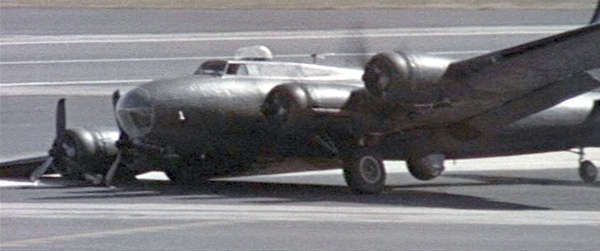
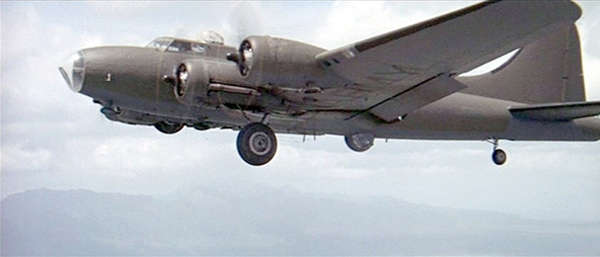
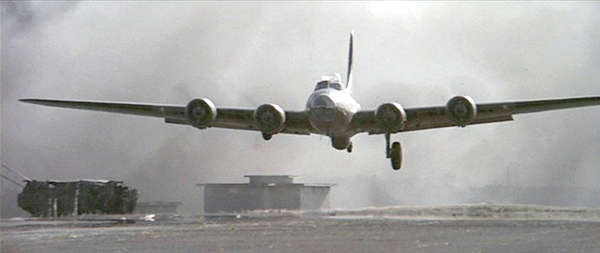
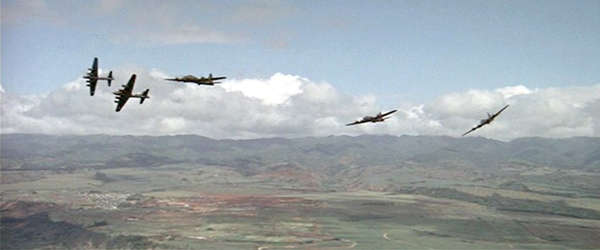
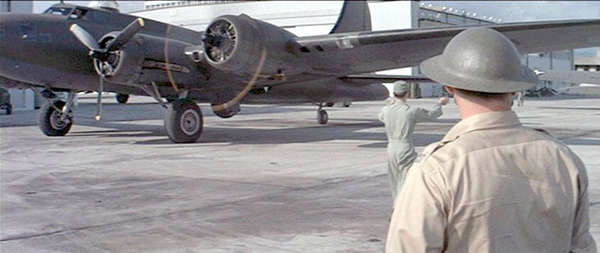














 Written by Aidan O'Rourke
Written by Aidan O'Rourke











